This week, I wrote a photo essay for Canada’s National Newspaper, The Globe and Mail. It seems fitting to share it here, as I reflect on Remembrance Day and sacrifices made by my grandparents. Both of my grandfathers served in the Canadian Army and Robert (and his brother John) mark the third generation of McClellan men who served in the U.S. military.
The Hidden Geography of War
In the cobalt depths off Bell Island, Newfoundland, the wreckage of war finds new life in the embrace of the Atlantic.
The unforgiving sea holds tales that remain long after the world above has forgotten them. As I plunge into the Atlantic from the stern of a 42-foot cruiser called Mermaid, the sharp chill jolts me. Pulsing and vibrant, lion’s mane jellyfish drift by, trailing endless tendrils of pink and white.
Slowly, the ghostly form of the SS Saganaga appears in the depths, upright and sitting on its keel in 120 feet of water. Its masts and spars, cloaked in a spray of filter-feeding life, are a vivid testament to the sea’s enduring bounty. I swim toward the silent deck gun, still aimed outward toward the ocean’s eternal blue. Formerly a symbol of deadly force, the barrel is now sprouting a colorful bouquet of anemones.
In the fall of 1942, German U-boats navigated the waters of the Bell Island Tickle – a narrow strait just 20 kilometres from downtown St. John’s – to torpedo four iron-ore-carrying vessels critical to Allied shipbuilding efforts. Over decades, the rusted remains of sunken ships have transformed into vibrant living reefs.
As I continue to explore, I see a crusty rock crab nestling among a tangle of shell casings, and a small striped shrimp darts from beneath an old phonograph record, thriving in this unlikely sanctuary.
Though few Canadians know about the attacks that took 70 sailors’ lives, Newfoundlanders reverently keep this history alive. Ethel Rees recalls her mother nursing wounded sailors on their kitchen table in Lance Cove. Inspired by this legacy, Ethel’s grandson, Daniel, a diver and nautical archaeologist, now serves as a rural physician in Clarenville, N.L., carrying forward this tradition of care.
For 25 years, a dive team led by Rick Stanley, owner of OceanQuest Adventures, has carried out the solemn honour of placing a Remembrance Day wreath on the wrecks. This year, diver John Olivero takes the lead, descending to secure a wreath and red poppies on the Free French vessel PLM 27. His Royal Navy grandfather helped install radar systems that ultimately curtailed U-boat supremacy – a legacy of service that brings Mr. Olivero pride.
These events hold lasting significance in Canada’s history. Yet perhaps what matters most are not the dates or names, but rather the unshakable legacy of sacrifice. As I travel the world in my role as Explorer-in-Residence for the Royal Canadian Geographical Society, that legacy resonates as I visit a sunken Liberty ship in Ponta Delgada Harbour, Azores or find boots and motorcycles stowed in the hold of the SS Thistlegorm, a British cargo ship sunk in the Red Sea in 1941. These are not merely relics but enduring reminders of the sacrifices underpinning our freedom. In a world engulfed by political tensions, these silent war vessels remind us of the vigilance required to protect it – a task more urgent now than ever.
Above: Remembrance Day observance at the war memorial Cenotaph near my home.
The crowd gathered thick and quiet under the grey sky at the Carleton Place cenotaph, with the cold stone casting shadows on a growing pile of wreaths. A lone piper lifted the air with a sound that could pull tears from even the most hardened soul. But it was the artillery rattling the windows, that carved out the moments that followed. Two minutes stretched with a silence heavy with gratitude. Chinook helicopters flew over, steady and low, their rotors thudding against the quiet, and I heard a baby cry out, startled by the sound. Yet somewhere, children hear the same, and it is not ceremony but danger that fills the air. I felt that deep in my chest, and the gratefulness that swells up in times like these, for peace that is ours by chance, for comfort a child can find in a mother's arms while so many others remain in harm’s way.
Video above: Our small town Ontario Remembrance Day parade.
Divers: Are You Going to DEMA?
Counterpoint: “What’s So Funny ‘Bout Peace, Love, and Understanding”
Yes, Elvis Costello with The Bangles dancing…!


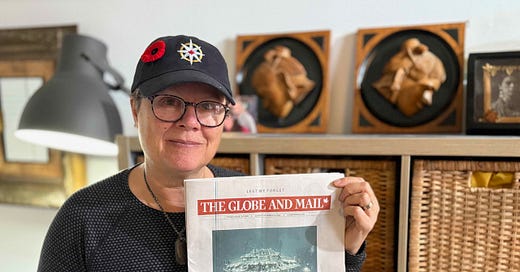


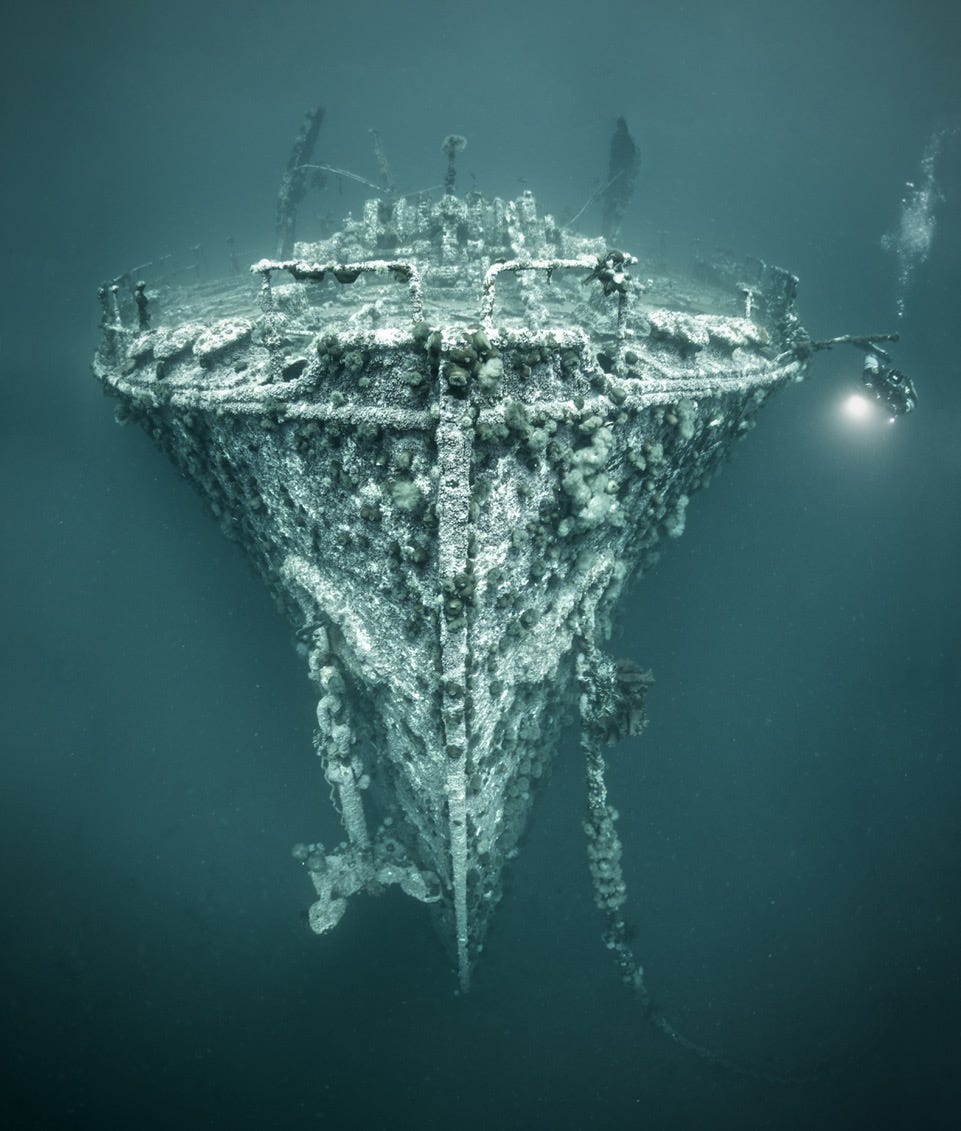
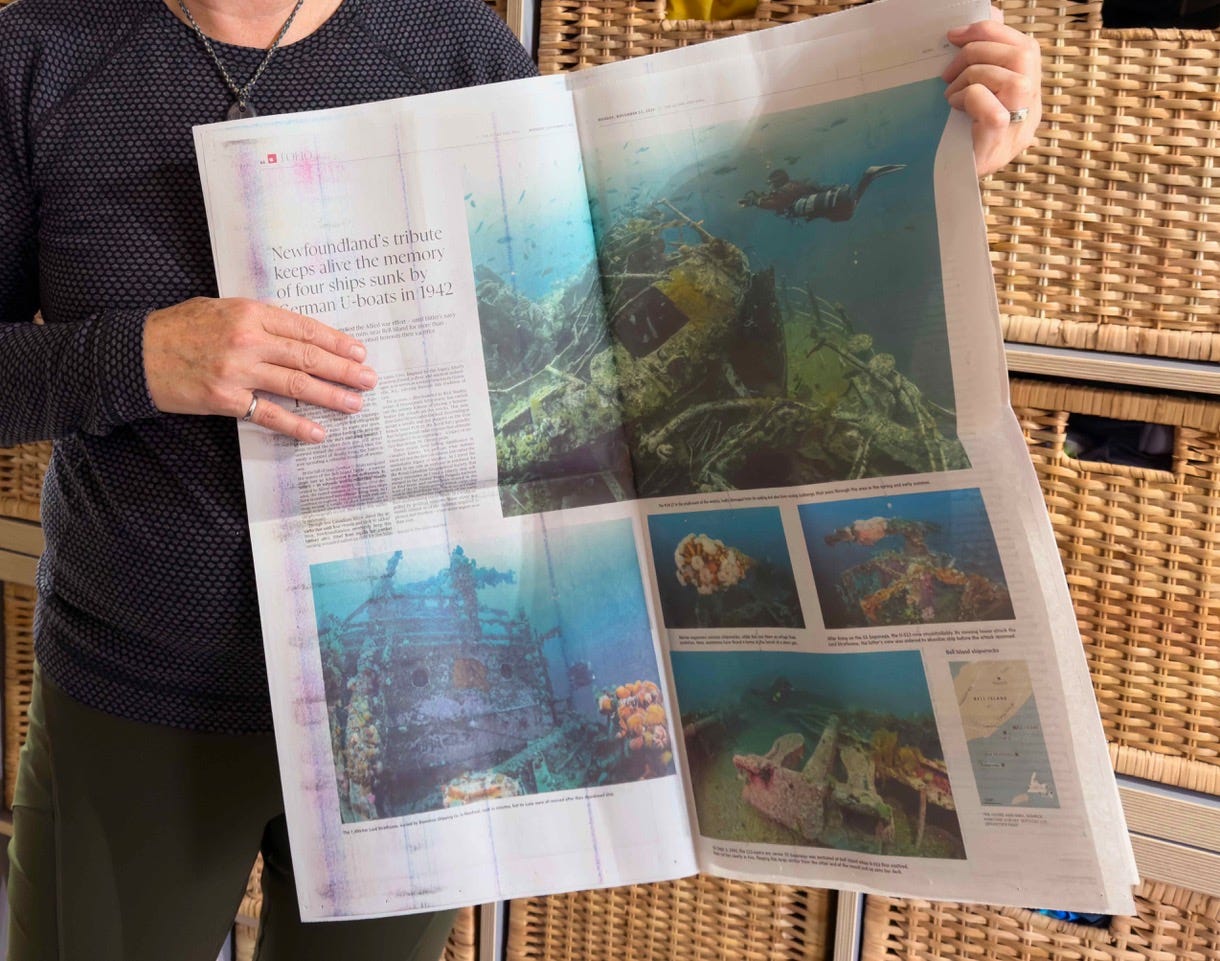
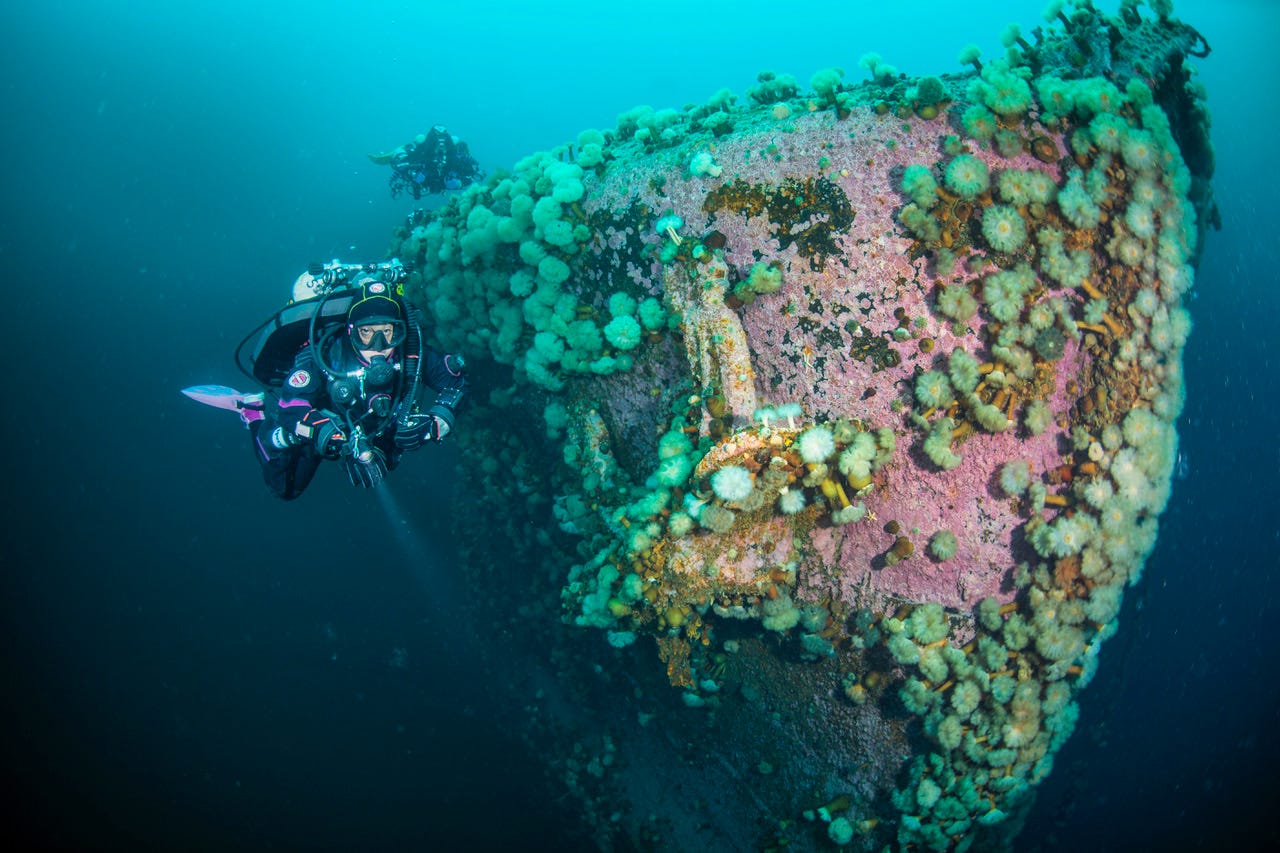
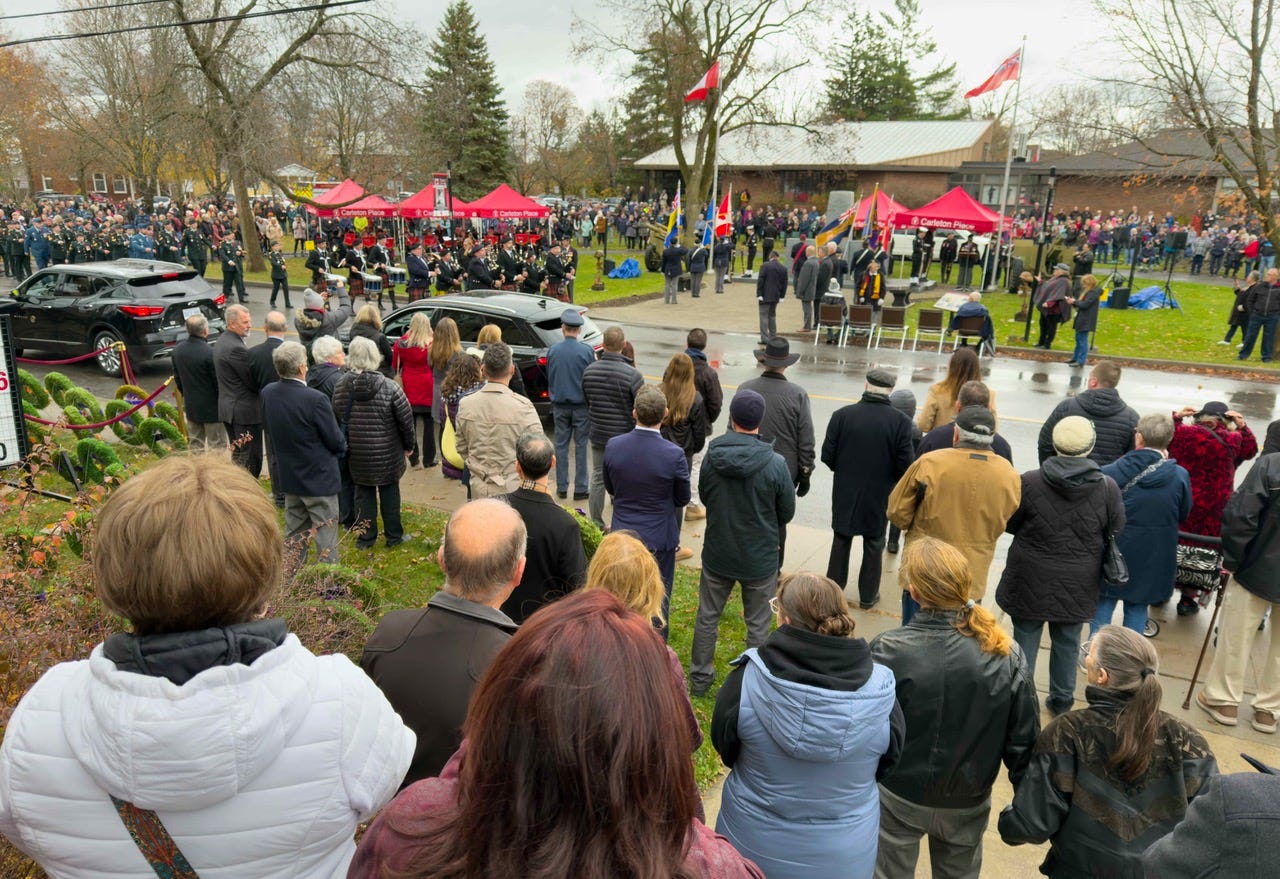
Thanks for your reflections Luca. I spent about 8 months in Romania filming a movie. I stayed in the Bucharest Hilton the whole time and I recall seeing all the bullet holes preserved in the walls of the square. Somehow it was even more frightening knowing that the revolution has happened in my lifetime and that while I was enjoying a stress-free education, others my age were fighting for their lives.
I remember the dark days of communism in Romania! While I was only 14 at the time, the oppression, the thirst for knowledge that could only be acquired by illegally listening to radio Stations like Free Europe and Voice of America, are still vivid in my mind! I also remember the start of the revolution and since my hometown had the dictator’s son as a mayor, it was a bloody fight! I remember listening to the bullet sounds as I was trying to fall asleep at night, not knowing what the new day may bring, how long it was going to last, whether I will live of die. While thankfully it only lasted for a week, it left a huge impression on me! My heart breaks when I think of so many in the world who fall asleep to sounds of war, specially children, uncertain of what the new day may bring!
Many people died that week because they believed in an ideal of freedom! They knew that their choice to go protest could very well lead to either imprisonment or death, yet they did, so my generation could have a better future! I am grateful to them, I am where I am partly because they were willing to sacrifice for others!
I traveled to Normandy few years ago and looking at those beautiful, peaceful beaches I couldn’t help but feel the fear and the pain they witnessed, those young boys who went to their death because they believed in an ideal, the notion that freedom was worth dying for, even when it was someone else’s freedom! I am enormously grateful for every single soldier who put themselves in harms way to protect others!
It’s beautiful, in someways, to see those wrecks becoming stunning reefs, teeming with life, yet I think it’s a metaphor for the surface too! As time goes by, as the survivors of those atrocities are mostly gone now, life is moving on and every day person does not have a frame of reference for what could easily happen if we stop paying attention! We need to always remember the past and keep it alive in our minds, specially now! Remembrance day, Veterans Day, Memorial Day, are important days to remember, to pause and appreciate where we are because of other’s sacrifice!
Thank you Jill for your always poignant message, I am sure you heard a lot of stories from your grandparents, I did too, I will always remember them! The photograph of SS Saganaga is absolutely stunning! Thank you Robert and your entire family of service members, Europe owes so many a debt of gratitude!